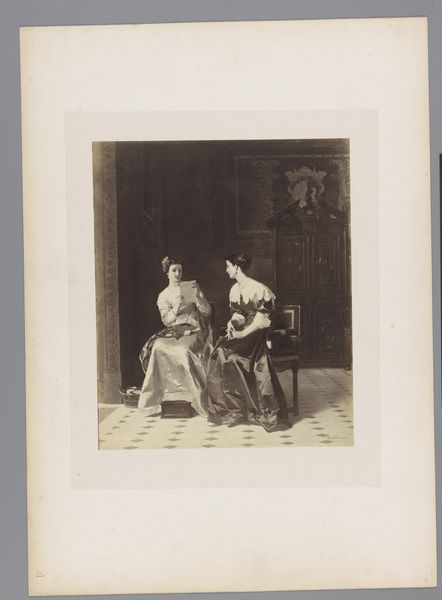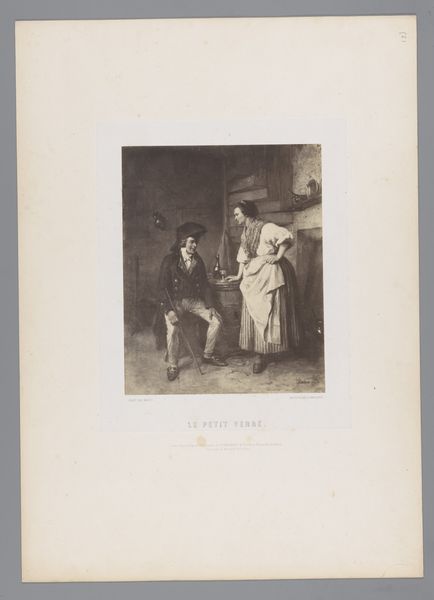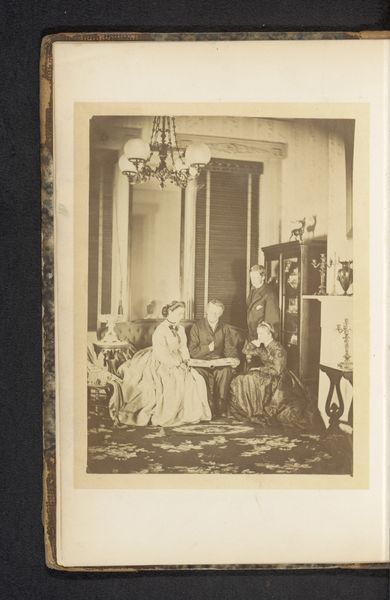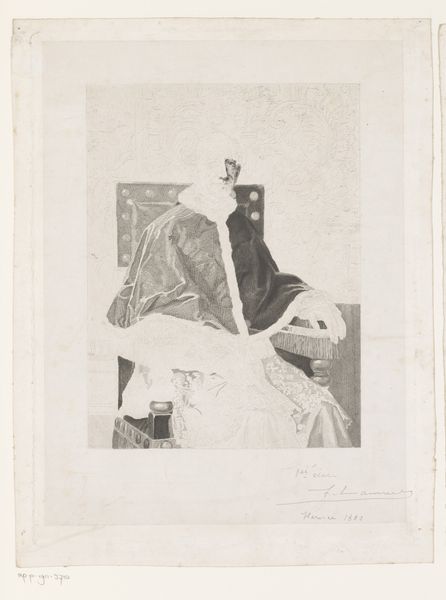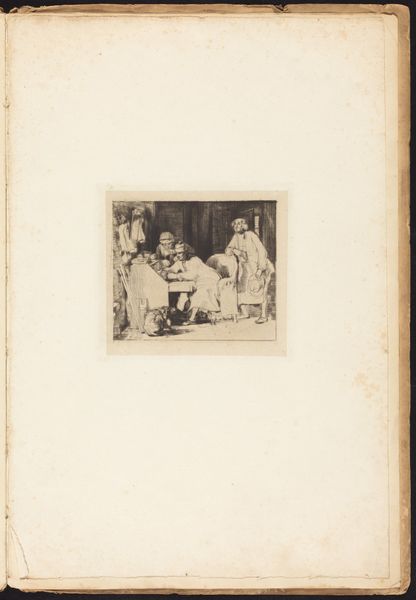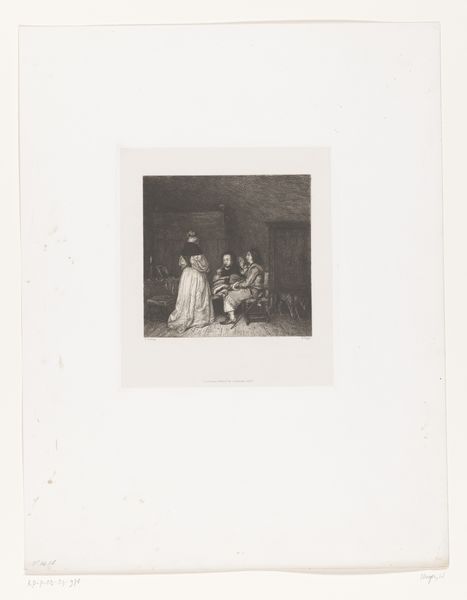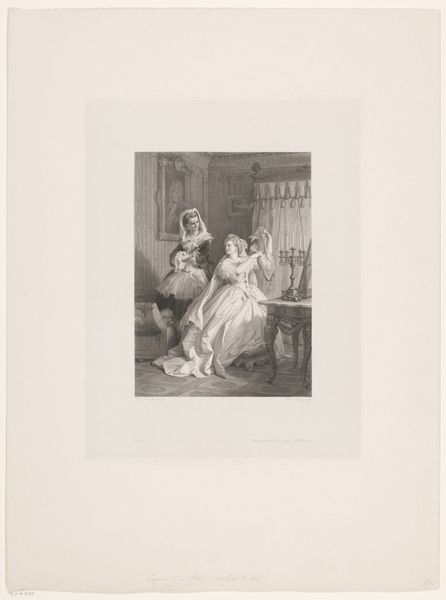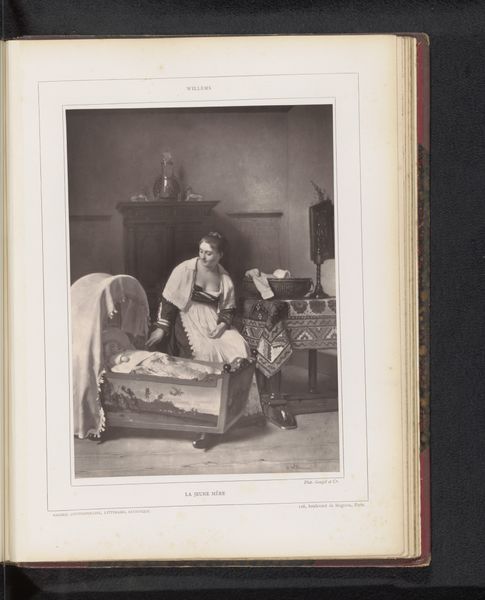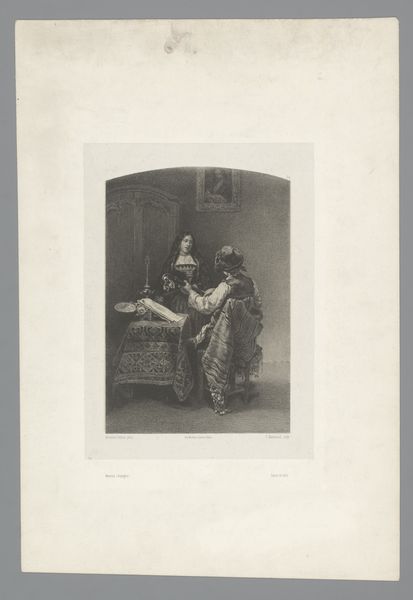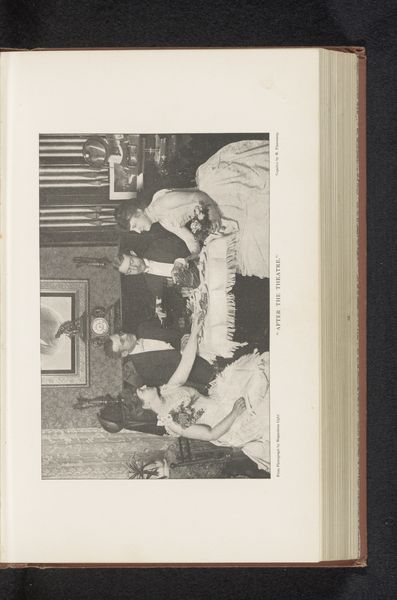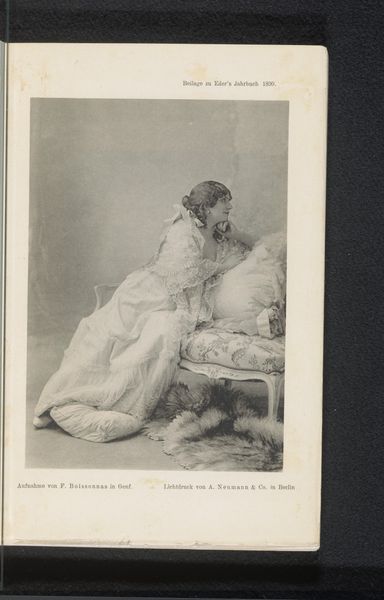
Fotoreproductie van een schilderij van drie vrouwen tijdens een gesprek in een tuin door Alfred Stevens before 1863
0:00
0:00
Dimensions: height 309 mm, width 264 mm
Copyright: Rijks Museum: Open Domain
Curator: What strikes me first is the tonal range; it’s muted but creates a really contemplative atmosphere. Almost dreamlike. Editor: Absolutely. This photograph, titled “Fotoreproductie van een schilderij van drie vrouwen tijdens een gesprek in een tuin door Alfred Stevens” pre-dates 1863. It's an interesting example of photography being used to document and disseminate painted images, essentially a reproductive print of a genre painting. It showcases the visual culture of the mid-19th century. Curator: Right, but if we strip away the title for a moment, we're still left with this potent scene of women together. Note the deliberate contrast between the woman dressed in light colors and the other one in black; the differences and relationships could suggest all kinds of gendered power dynamics. Perhaps even a conversation about their societal roles. Editor: The photograph’s cultural impact lies, in part, in its accessibility. Imagine this circulating amongst middle-class households, presenting a particular vision of femininity and domesticity. Consider who was included and who was systematically excluded. Curator: Precisely. Think about the garden setting, a common motif of leisure for privileged women. The inclusion of a seemingly relaxed dog on the floor adds a subtle, but telling, layer of the unbothered attitude towards the societal challenges outside the space. It could almost serve as a commentary on class and privilege. Editor: I'd like to point out how it fits into a wider history. Photography itself was undergoing rapid development at this time, influencing visual art. We can trace its impact through shifts in Impressionism, for example. But these representations in this artwork were not often about true social change. Instead, they mostly just reproduced prevailing norms. Curator: Fair point. Despite its apparent stillness, the photograph opens a window onto ongoing power structures. There are the gazes and gestures, the contrasts and proximities. They silently perform gendered codes. Editor: Thinking about the museum context then, it encourages us to understand what historical conversations informed it and how photography altered art viewing more broadly. Curator: Ultimately, it's a photograph holding layers that reflect upon society itself. Editor: It truly is more than just an aesthetic piece; it's a reflection of social currents captured in light and shadow.
Comments
No comments
Be the first to comment and join the conversation on the ultimate creative platform.
